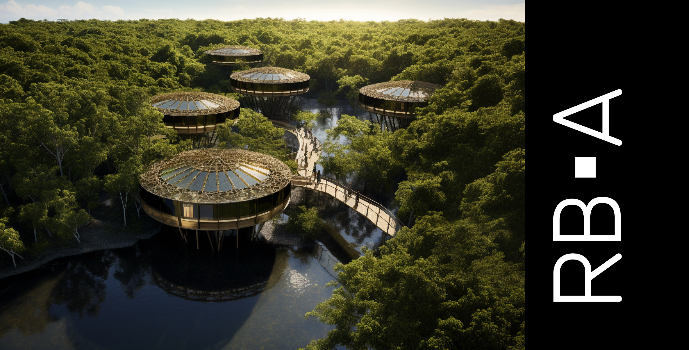Introduction to the International Day for the Conservation of the Mangrove Ecosystem
Every year on July 26th, the world observes the International Day for the Conservation of the Mangrove Ecosystem. This day, designated by UNESCO, is a call to acknowledge mangroves’ fundamental role in maintaining biodiversity, fighting climate change, and bolstering communities. In the realm of data centre architecture, the value of these ecosystems becomes evident as we confront the trifecta of deforestation, pollution, and climate change.
State of Mangrove Ecosystems Worldwide
Unfortunately, mangrove forests worldwide are under threat. Unchecked deforestation for urbanisation, aquaculture, tourism, and pollution have led to significant mangrove loss. It’s estimated that around 35% of the world’s mangrove ecosystems have been destroyed over the past three decades. Mangrove losses from 1980–2005 are estimated to be more than 3 million hectares. It is crucial to restore and enrich them.
Why Mangroves Matter for Data Centre Architects
Mangroves are not just clusters of trees; they’re coastal lifelines, buffers against environmental adversities. As data centre architects, our designs must serve human needs while respecting and enhancing the natural environment. We view mangrove conservation as crucial to our pledge to sustainable architecture, weaving ecological mindfulness into our design ethos.
Mangroves serve as a natural barrier against coastal erosion and extreme weather events. Additionally, they function as habitats for various species and act as significant carbon sinks, helping combat climate change.
Impacts of Mangrove Damage: Global and Northern Hemisphere Effects
The loss of mangroves has extensive impacts. Locally, it results in biodiversity loss and an increased susceptibility to natural disasters. On a global scale, it accelerates climate change. In the Northern Hemisphere, the consequences of mangrove destruction are observed through intensified weather patterns and escalating coastal erosion due to sea-level rise.
Sustainable Architecture : A Path to Mangrove Conservation
In data centre design and construction, sustainable practices play a pivotal role in contributing to and potentially mitigating mangrove destruction. These practices minimise environmental impact, help preserve mangrove ecosystems, and could even contribute to their restoration. Such methods include creating designs that coexist with the natural landscape, leveraging local, sustainable materials, and including elements that enhance local biodiversity.
How Data Centre Architects Contribute to Mangrove Conservation
As data centre architects, our contribution to mangrove conservation manifests in several ways:
- Minimising Disturbance: We judiciously choose construction sites to minimise disruption to existing mangroves and employ building techniques that limit ecological disturbance.
- Maximising Efficiency: We design our data centres to optimise energy efficiency, thereby reducing the carbon footprint of our facilities and indirectly supporting mangrove conservation.
- Promoting Awareness: By incorporating mangrove preservation principles into our designs, we aim to raise awareness about these invaluable ecosystems and motivate our industry peers to follow suit.
Looking Ahead: The Future of Data Centre Development and Mangrove Conservation
We envision an increasing need for sustainable data centre development at Reid Brewin Architects. The stark realities of climate change and biodiversity loss necessitate immediate steps to safeguard our precious ecosystems. We remain dedicated to this cause and will continue to foster sustainable design practices across all our projects. You can read more about our commitment here.
As we commemorate the International Day for the Conservation of the Mangrove Ecosystem, let’s acknowledge the irreplaceable value of these unique habitats and our collective responsibility for their conservation. Sustainable architectural practices in the data centre industry are vital to this endeavour. Preserving mangroves is more than just safeguarding remote, exotic landscapes; it’s about preserving our global climate and securing our collective future.











